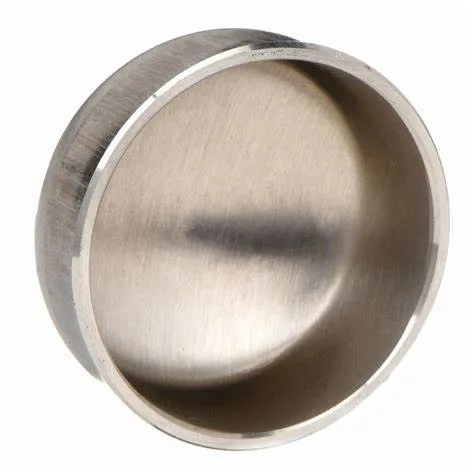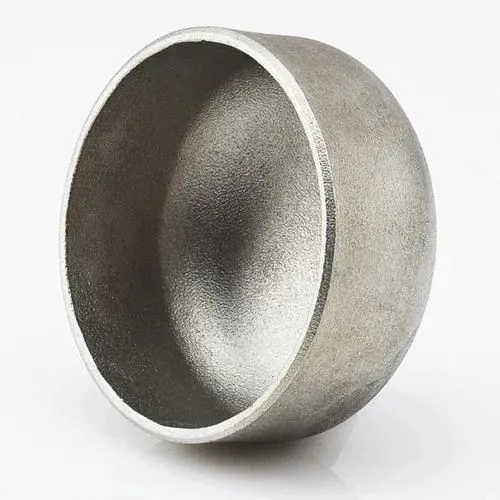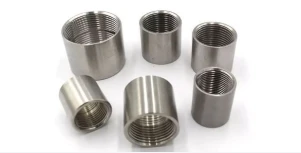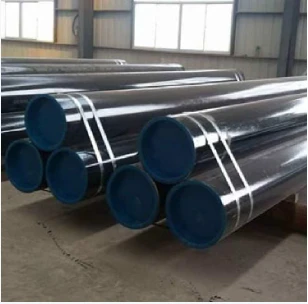JIS B2311 je japanski industrijski standard koji pokriva cijevne spojeve za sučeono zavarivanje, uključujući čepove koji se koriste u cijevnim sistemima. Poklopci za sučeono zavarivanje služe za zatvaranje kraja cijevi, osiguravajući brtvu kako bi se spriječilo curenje ili kontaminacija. Evo uvoda u JIS B2311 kapice za sučeono zavarivanje:
- 1. JIS B2311 Standard:
- - JIS B2311 standard utvrđuje zahteve za projektovanje, dimenzije, materijale, proizvodnju i ispitivanje fitinga za sučeono zavarivanje, uključujući kape, u sistemima cevovoda.
- - Standard osigurava da čepovi proizvedeni u skladu sa JIS standardima ispunjavaju standarde kvaliteta i da su kompatibilni s drugim komponentama cijevi.
- 2. Kapa za čeono zavarivanje:
- - Poklopac za čeono zavarivanje, prema JIS B2311, je spoj dizajniran da bezbedno pokrije i zapečati kraj cevi, pružajući zaštitu i održavanje integriteta cevovodnog sistema.
- - Poklopci se koriste u situacijama kada kraj cijevi zahtijeva zatvaranje, bilo trajno ili privremeno, kako bi se spriječilo curenje, kontaminacija ili da bi se obezbijedio završetak sistema.
- 3. Materijal i konstrukcija:
- - Kape za sučeono zavarivanje prema JIS B2311 specifikacijama dostupne su u različitim materijalima kao što su ugljični čelik, nehrđajući čelik i legirani čelik kako bi se zadovoljili različiti zahtjevi primjene.
- - Ove kapice su proizvedene korištenjem standardiziranih metoda konstrukcije kako bi se osigurala čvrsta veza bez curenja kada su zavareni na kraj cijevi.
- 4. Primjena i prednosti:
- - Kape za sučeono zavarivanje nalaze se primjene u različitim industrijama, uključujući naftu i plin, kemijske procese, postrojenja za prečišćavanje vode i više gdje krajevi cijevi moraju biti sigurno zatvoreni.
- - Poklopci pružaju zaštitu krajevima cijevi od elemenata okoline, sprječavaju kontaminaciju i pomažu u održavanju čistoće i integriteta cijevnog sistema.
- 5. Ugradnja i zavarivanje:
- - Odgovarajuće prakse ugradnje, uključujući ispravno poravnanje, pripremu kraja cijevi i tehnike zavarivanja, neophodne su prilikom ugradnje čepova za sučeono zavarivanje kako bi se osigurala čvrsta i nepropusna brtva.
- - Zavarivanje je uobičajena metoda za pričvršćivanje kapa na cijevi, osiguravajući sigurno i trajno zatvaranje koje može izdržati pritisak, temperaturne varijacije i protok tekućine unutar sistema.
- Ukratko, JIS B2311 poklopci za sučeono zavarivanje su ključne komponente koje se koriste u sistemima cijevi za sigurno zaptivanje i zaštitu krajeva cijevi. Ove kapice su usklađene sa standardiziranim zahtjevima kako bi se osigurala kvaliteta, pouzdanost i kompatibilnost unutar industrijskih aplikacija gdje su zatvaranje cijevi i zaštita neophodni.
What Is a Butt Welding Cap and How Is It Used in Industrial Piping?
In industrial piping systems, end-of-line sealing and branch closures require robust solutions. A butt welding cap serves as a critical component for terminating pipes securely. By providing a seamless, welded closure, this fitting maintains system integrity, prevents leaks, and supports compliance with industry standards.
What Is a Butt Welding Cap?
A butt welding cap—also called a pipe end cap or buttweld end cap—is a round fitting designed to close off the end of a pipe. It’s manufactured to match the pipe’s outer diameter and schedule, with either a hemispherical or flat face. To install, both the pipe end and cap are beveled to form a V‑groove, enabling full‑penetration, fusion welds. Common materials include carbon steel, stainless steel, nickel alloys, and other engineered grades, chosen to satisfy pressure, temperature, and corrosion‑resistance requirements.
How Is Butt Welding Cap Used in Industrial Piping?
Butt welding caps find application across oil & gas, petrochemical, power generation, water treatment, and general process industries for both permanent and temporary closures. During hydrostatic testing, technicians install caps to seal off sections of piping while monitoring for leaks. In new construction or retrofit projects, caps terminate branch lines, future tie‑in spools, or dead‑end mains until system expansion. Welders prepare each joint by cleaning and beveling surfaces, aligning the cap precisely, and executing a root pass followed by filler passes per the qualified Welding Procedure Specification (WPS). Post‑weld heat treatment and non‑destructive examination (NDE)—such as radiography or ultrasonic testing—verify weld integrity and compliance with ASME B16.9 and related standards. Additionally, temporary caps enable safe isolation during maintenance, allowing for segment testing and dewatering under regulatory protocols.
Benefits and Best Practices
Butt welding caps offer a smooth‑bore transition that minimizes flow disruption and stress concentration. Their full‑penetration welds deliver exceptional structural strength and leak resistance. To optimize performance, engineers should:
Select caps with matching material grades and wall thicknesses
Adhere to proper bevel angles and joint fit‑up tolerances
Follow qualified WPS protocols rigorously
Consider cladding or protective coatings in corrosive environments to extend service life
Regular inspection and thorough documentation ensure long‑term reliability and safe operation under demanding conditions.
Butt welding caps are indispensable components for achieving durable, leak‑proof pipe terminations in a wide range of industrial applications.
Butt Welding Cap FAQs
What is a butt welding cap?
|
What materials are commonly used?
|
What standards govern butt welding caps?
|
How are butt welding caps installed?
|
Where are butt welding caps typically used?
|
What are the advantages of threaded caps?
|
















